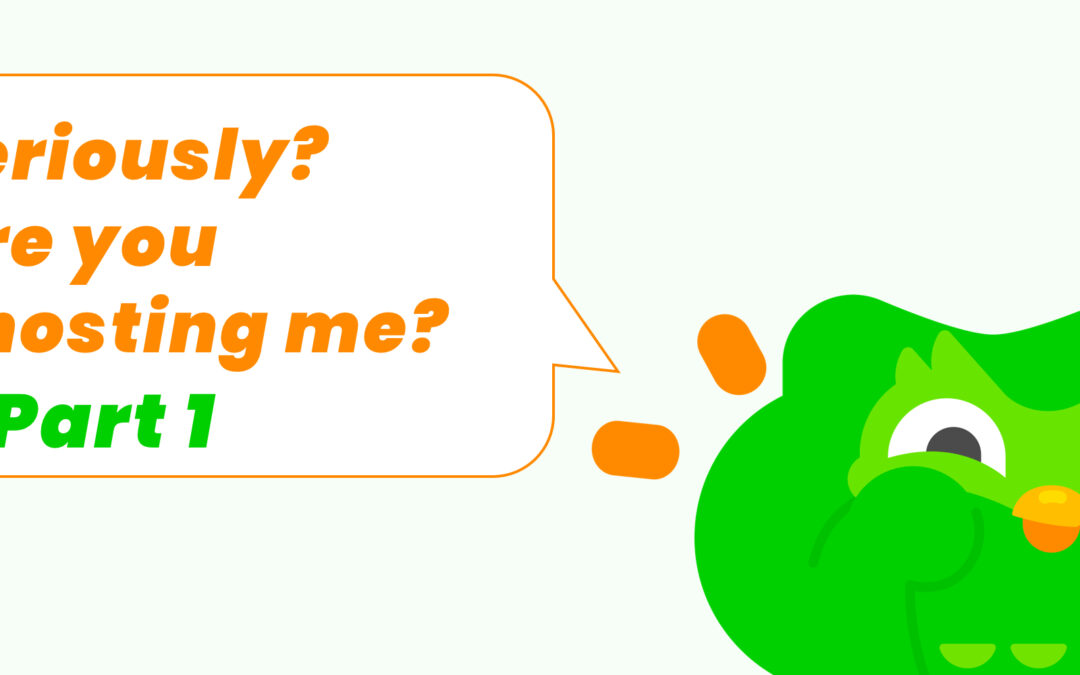Being ill during the holidays can have its benefits. I got to watch A TON of movies that I had missed throughout the past year. One of the films I saw was HER by Spike Jonze, and it blew me away! To the extent that I immediately jumped online to read through all the articles written about it in the past year. In the process, I discovered an amazing blog and book on sci-fi interfaces and what experience designers can learn from them. But let's start at the beginning. HER by Spike Jonze - and it absolutely blew me away! So much so that I dived straight into the internet to read all the articles that had appeared about it in the past year. I also came across a great blog and book about sci-fi interfaces - and what experience designers can learn from them. But let's start from the beginning.
A disclaimer up front: this article might contain spoilers. If you have not seen HER, you have been warned!
AI-Companion questions inspired by HER
One of the appealing aspects of the movie was that the “futuristic interaction design”, which had a central role in the story, was not the typical eye candy of other Sci-Fi movies of the same year, e.g. Guardians of the Galaxy. Instead of wowing the viewers visually, the Sci-Fi triggered questions, some of which I wanted to dive deeper into:
- Why does the relationship between Samantha (an AI) and Theodore work so well for the viewer?
- Will technology ever be as beautifully invisible and ubiquitous as it is in HER?
- And if so, what would the challenges look like?
Nostalgic near-future technology
Look Ma! No hands!
The movie shows us a „near-future reality“ with highly developed technology well integrated into everyday life. Therefore, we can relate to the given reality more than to the worlds of other Sci-Fi movies in which society has come this far, technologically speaking.
The technology shown is nearly invisible - in the background - reacting to human needs at just the right moments. This is very different from the semi-transparent glow fests that occupy entire rooms in other movies of the genre. The human-machine touch points are beautifully solved, gentle and nearly poetic.
In the opening scene, we see a close-up of our main protagonist, Theodore (played by Joaquin Phoenix), seemingly talking to a loved one. When we zoom out, we realise he is sitting at the desk at his job (at beautifulhandwrittenletters.com) and is „writing a love letter“ for a client. The computer turns Theodore's words into handwritten letters, presumably in the handwriting of the clients, which are mailed off at the end of the day. For all we know, this happens without the touch of a keyboard or push of a button. There is no device barrier between humans and computers. The interaction is solely by voice interface.
When Theodore leaves work, we are introduced to his ear device and a device that resembles a vintage cigarette case, capable of displaying visuals and having a built-in camera. During his commute, Theodore navigates through his messages and feeds of the day via a voice interface, earphones and the handheld visual device. The voice of the OS is robotic, stoic and emotionless.
What Theodore is doing in these first scenes is highly relatable to us. People with desk jobs might have a similar structured workday and commute. Theodore, however, manages to do these tasks without his fingers glued to a keyboard, a mouse, a touchpad, or various screens. Even though it is the same things we do today, Theodore's version seems more natural to us, reminds us of interaction with humans before we had the gadget barrier, and almost feels nostalgic.
How to make a Human-AI Relationship believable
The power of Sound, Set and Costume Design and Human Imagination
When Theodore updates his personal OS to OS1, Samantha (Theodore's version of OS1 and soon to become love interest) is introduced. Samantha (voiced by Scarlett Johansson) also works with a voice interface. Her voice, however, is not mechanical, monotone or robotic. Instead, she follows human social conventions („Make it so: Interaction Design Lessons from Science Fiction“ by Nathan Shedroff, Christopher Noessel: chapter 6 Sonic Interfaces / Voice Interfaces). When Samantha is first activated, her first question is „How are you doing? “. Samantha even names herself, which, from then on, Theodore uses when referring to her. Samantha is intuitive, capable of learning and adapting to her owner’s needs and - as we find out later - even autonomous. When she leaves messages for Theodore, the notice is displayed on Theodore's handheld visual device in „her handwriting“. She seems and sounds human. Sam's voice has the same resonance and body as all human voices in the story. She sounds as if she were in a room with Theodore rather than having her voice transmitted over an in-ear speaker.
The entire human-computer interaction was very carefully constructed to make us, as well as Theodore, anthropomorphise Sam, which is a typical human-user act („Make it so: Interaction Design Lessons from Science Fiction“ by Nathan Shedroff, Christopher Noessel: chapter 9 Anthropomorphism/ Humanness is Transferable to Nonhuman Systems). The general production design further supports this through its vintage design choices, giving this future a warm feel in which it is very easy to forget that Sam is an AI. My personal favourite design choice: a safety pin holds the handheld device in place in Theodore's shirt pocket so Sam „can see“ when they are on trips together. This solution is refreshingly analogue.
Human Imagination putting it all together
Human imagination is addressed and on display multiple times in the movie. In one scene, we get to experience Theodore imagining himself hugging Sam in the snow-covered mountains where they had spent their vacation together. We see how he visually imagines Sam. The interactions with Sam are so frictionless that he can imagine her as a human.
Even though OS1 / Samantha is near-future technology, the relationship we see in HER works well for today’s viewer, because of its humanity. Advanced technology, such as OS1, turns clunky human-machine interactions into experiences that feel natural and human. Experiences that do not follow carefully crafted user patterns or designed user stories.
We are witnesses to Theodore's evolution from anthropomorphising Sam to falling in love with her and ending with a broken heart, even though the relationship becomes proceedely uncanny as Sam starts to reveal (or find) her intellectual capacities and superiority.
The future of ubiquitous AI-powered technology and the challenges
Could HER be possible in the real world?
At the 2014 Øredev Developer Conference, Christopher Noessel, during his keynote, wondered who would build software such as OS1. He concluded that either the military, academia or a corporation could end up launching technology similar to Sam. He assumed, however, that a product such as OS1 would never be introduced to the consumer market (even if developed by a corporation), as the sheer possibility that the OS could fall in love with its owner would mean that the product would be too buggy for release and unprofessional.
I disagree with this assumption because I don't believe the risk of unprofessional and buggy products would keep corporations from releasing a product such as OS1. Just take a look at all the products out there today that lack a thorough concept, design, production and Quality Control. I am convinced that someone, somewhere, is currently trying to build OS1 and shiver just by thinking about that, because a human-made product can in no way predict all possible user or AI stories (OS1 is adaptable and constantly learning) and their outcome in a system mimicking humanity.
Dystopian AI-Companions for everyone!
A similar story can be found in an episode of Black Mirror called „Be Right Back“ (S2, Ep1), in which another possible corporate-made human-like AI revenue stream is explored.
In the episode, Martha loses her partner, Ash, in an accident. A friend signs her up for a new service that allows people to communicate with their deceased loved ones. This is made possible because the service creates an AI that is fed with public data left behind by the deceased on social media and the general internet. After a slow start, packed scepticism on Martha's behalf (she does not want to get attached to something digital and not real), she embraces the new possibility and spends quite some time talking to (AI) Ash.
However, Ash then suggests that Martha take the next step and book an additional, experimental service the company offers: an Ash robot (the technology is not specified), that is shipped in a box, inflated and brought to life in a bathtub filled with water.
After some time with Robot Ash, Martha starts to see the flaws in this AI because Robot Ash knows things the real Ash would not know (as he can learn from online resources) and reacts in ways the real Ash would not (as the information on the reaction is not available in an online database). The relationship turns sour and ends with Martha keeping Robot Ash in the attic, unable to abandon him completely.
Because “Move fast and break things” - right?!
Both “HER” and “Be Right Back” are love stories that do not end well due to a „malfunction“. In „HER“, OS1 was never intended to fall in love with its client and ends up being too human, while in „Be Right Back“, the incarnated AI is not human enough.
This is because it is impossible to predict the use cases for products with such depth and possibilities, products that are endlessly scalable, adaptable and self-adjusting.
I see the challenges of ubiquitous computing in holding the balance between predictable or orchestrated functionality and companionship. I am not sure if this could go as far as the creation of an AI, without risking various scenarios in which the functionality could grow unintentionally and lead to „malfunction“. It can, however, surely lead to more than the single-task IoT objects that we have today.
Only because we know the math does not mean that we are capable of computing social psychology. But I'm confident we'll try anyway.
Links and research resources
- HER on IMDb https://www.imdb.com/de/title/tt1798709/
- Black Mirror, Be Right Back (S2, Ep1) on IMDb: https://www.imdb.com/de/title/tt2290780
- Make It So: Interaction Design Lessons from Science Fiction, September 2012, by Nathan Shedroff and Christopher Noessel https://rosenfeldmedia.com/books/make-it-so/
- Is it going to happen like this?, 17 Feb 2014 by Christopher Noessel https://scifiinterfaces.com/2014/02/17/like-this/
- DECONSTRUCTING HER (Keynote Øredev Developer Conference), 2014, by Christopher Noessel http://player.vimeo.com/video/110979533
- Why Her Will Dominate UI Design Even More Than Minority ReportJanuary 13, 2014, by Kyle Vanhemert https://www.wired.com/2014/01/will-influential-ui-design-minority-report/
- Below the Line: Designing 'Her', December 18, 2013, by Mekado Murphy https://archive.nytimes.com/carpetbagger.blogs.nytimes.com/2013/12/18/below-the-line-designing-her/?_r=2
- An Interview with Geoff McFetridge on the Interfaces from Her, March 1, 2014, by Alissa Walker https://gizmodo.com/an-interview-with-geoff-mcfetridge-on-the-interfaces-fr-1526237090
- fakeui.tumblr.com has gathered some good Movie and TV UIs for inspiration.
- Another promising source might be KIT FUI (https://saji8k.github.io/kit-fui/„an IMDb-like database that makes it easy to research screenshots, videos and the designers of these FUIs.“
Photo: Cover taken from www.herthemovie.com




